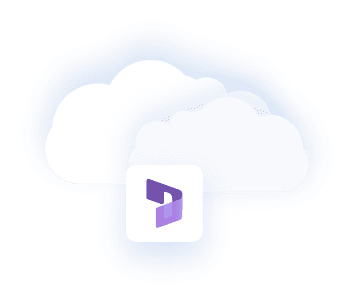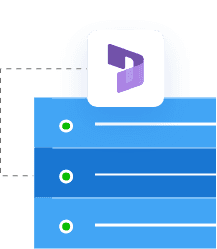Your Journey to Dynamics 365 Starts Here!
Fill in your business details and let
us be your partner in growth.
Exploring the curious case of deploying Microsoft Dynamics 365
Deciding and deploying a whole new business app can be arduous at times. But since you have already decided to go with `Microsoft, you have already won half the battle. And hopefully, for the remaining half, we, the Dynamics Square team, will help you to come to a concrete decision on how to deploy Dynamics 365 products or the best way to do it: on-premises or in-cloud.
Remember: Since the launch of MSFT Dynamics 365 in 2016, over 80% chose to deploy it in the cloud. Why? Simple! Low deployment and maintenance costs.
So, you have multiple choices to host your new Dynamics 365 solution, thanks to Microsoft's backtracking decision after realizing that on-premises or the demand for locally hosted software is still high. Meaning, you have three ways of deploying Dynamics 365 module(s): via the cloud, local hosting, or hybrid deployment. The latter two are more costly than the cloud deployment option.
Speed your deployment and implementation via training and consulting. We help clients realize business value faster.
Hosted in the Microsoft Cloud by Microsoft. No hosting cost due to the Pay-as-you-Go model
Hosted or installed on Private Servers, leaving you footing the bill
The amalgamation of in-cloud and on-premises deployment features
Stay connected, stay agile, and be more productive anytime, anywhere.
The in-cloud deployment of Microsoft Dynamics 365 ensures numerous growth opportunities for modern businesses, from data security and flexible communication among different teams to increasing customer engagement, enhancing customer experience, and integrating more apps to take control of all business operations.
Key Features and Capabilities

Ensure absolute control over your information and data by deploying Dynamics 365 on your private servers. Run your business processes in on-remises customer data centers.


It's Time To Modernize Your Current On-Premise Solutions By Migrating To The Cloud.
| Criteria | MSFT Dynamics 365: In Cloud | MSFT Dynamics 365: On-Premises |
|---|---|---|
| Cost Model | Monthly subscription | Huge initial capital investment (CapEx |
| Storage Space | 5 GB (additional 2.5 GB for every 20 licenses) | Limited to available server storage |
| Hardware Required | No | Needs existing hardware or additional servers |
| Connectivity | Reliable connectivity backed by Microsoft to 99.9% | No need for an internet connection to access apps, data, or info |
| Mobility | Offline availability of apps for access other than online access | Only available for offline access |
| Deployment | Quick and easy | Time-consuming and complex |
| Maintenance Expenses | None | High maintenance and upgrading server costs |
| System Update | Consistent automatic release of updates (both minor and major) | Option to delay minor updates until the next major release |
| Flexibility | Yes | No |
| Data Access | Only via API (Application Programming Interface) or report connectors | Full Access |
| Information Storage | In highly secured Microsoft Data Centers across the globe via Microsoft Azure | Ownership of the installed systems and full control over stored information |
Storms come and go. What remains is our will to get up and start running. So, stop procrastinating, start embracing the change, and move your business operations to the cloud and running like never before. It will not only help you modernize your current/legacy ERP/CRM on-premises solutions but will also make you future-ready.
Access the technology of the future today. Control costs and complexity. Improve your organization's productivity with our Dynamics 365 experts. We help businesses accelerate their digital transformation journey while minimizing risk.
Get In Touch!